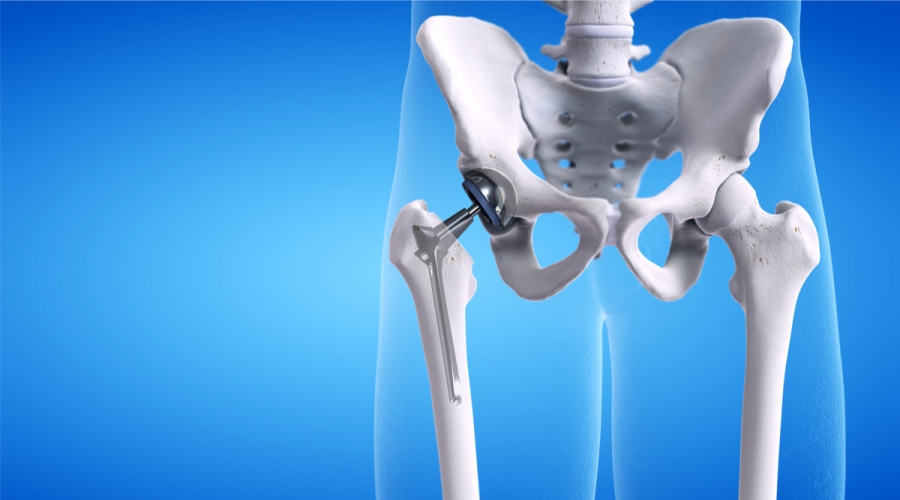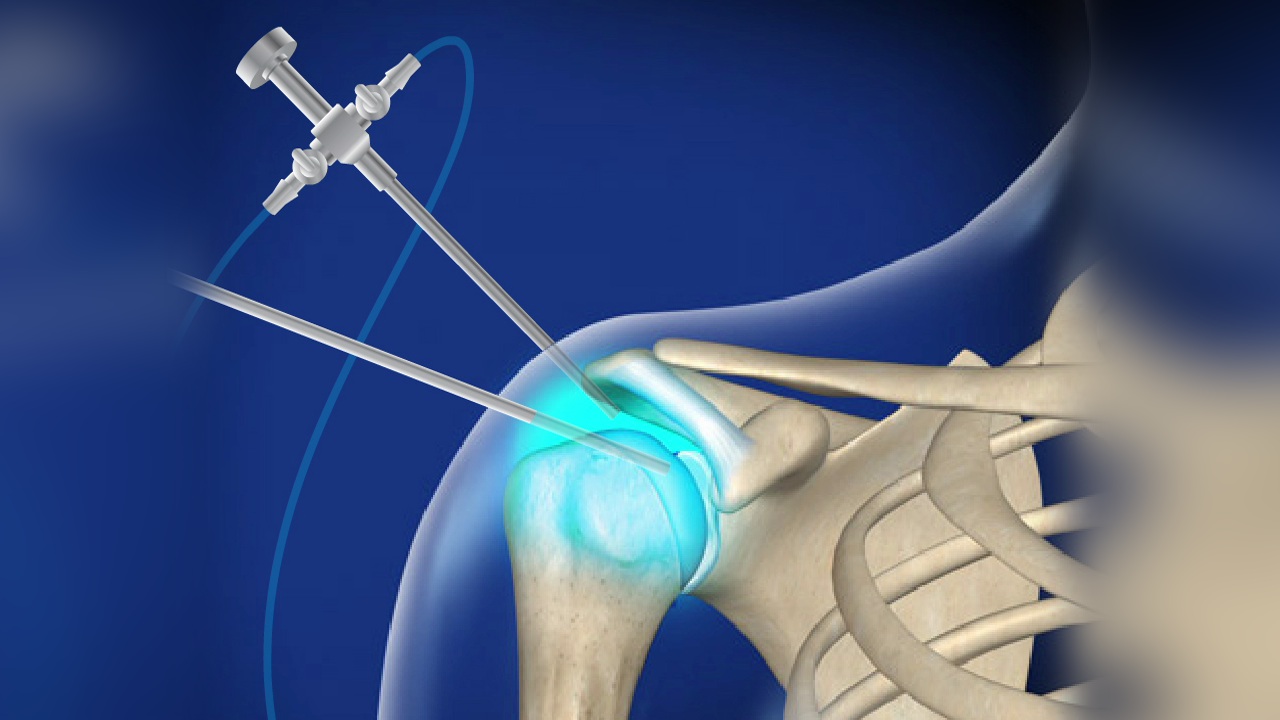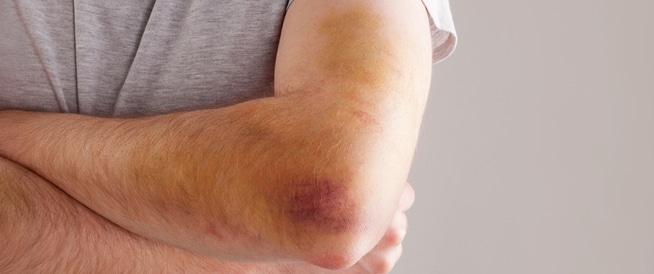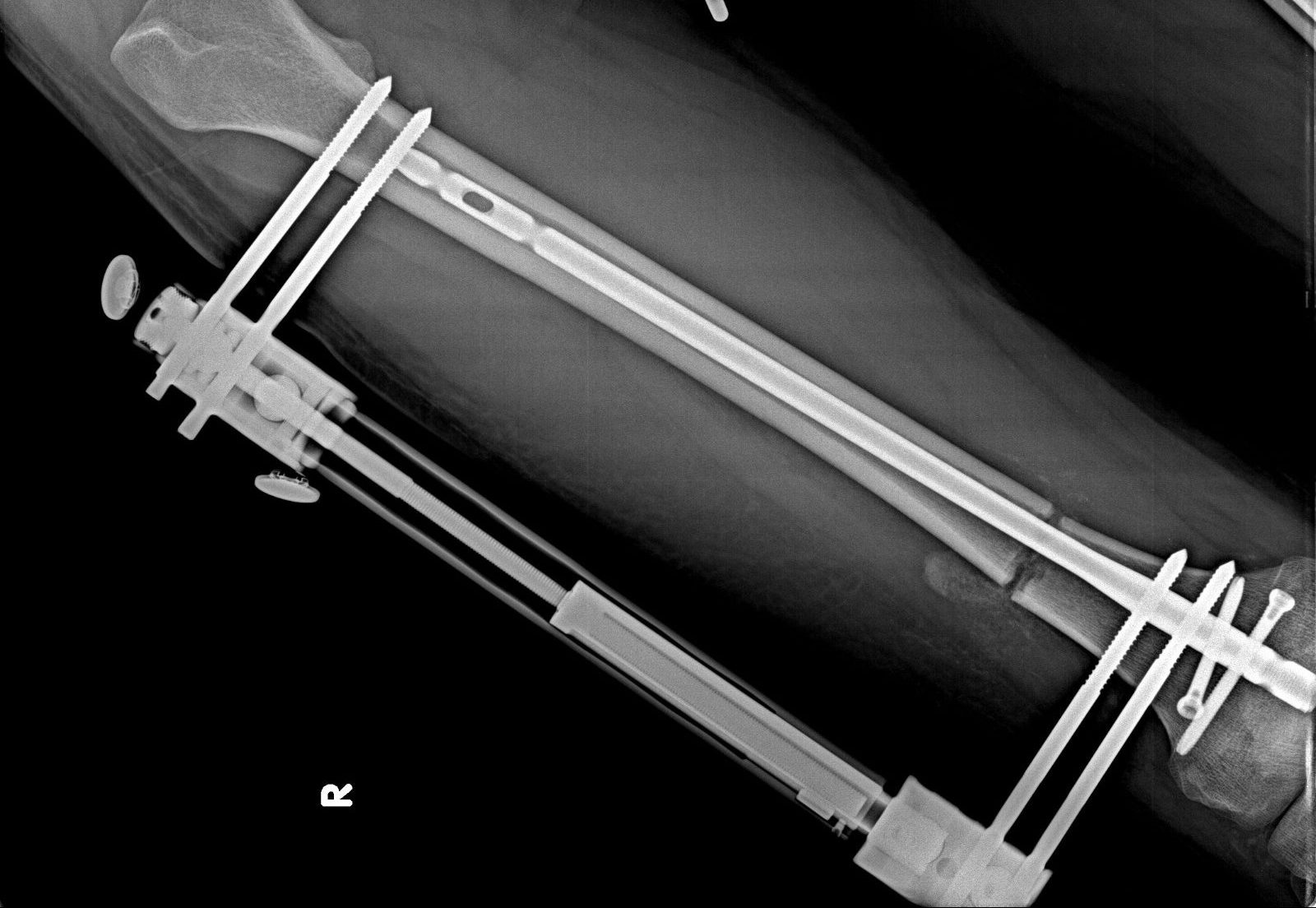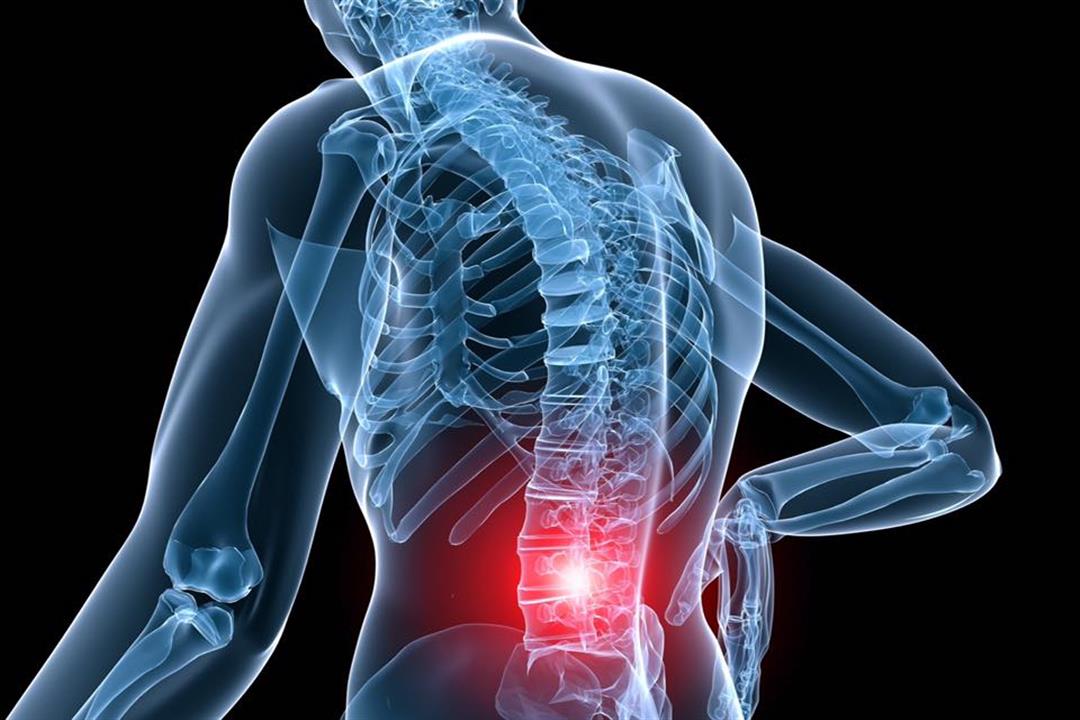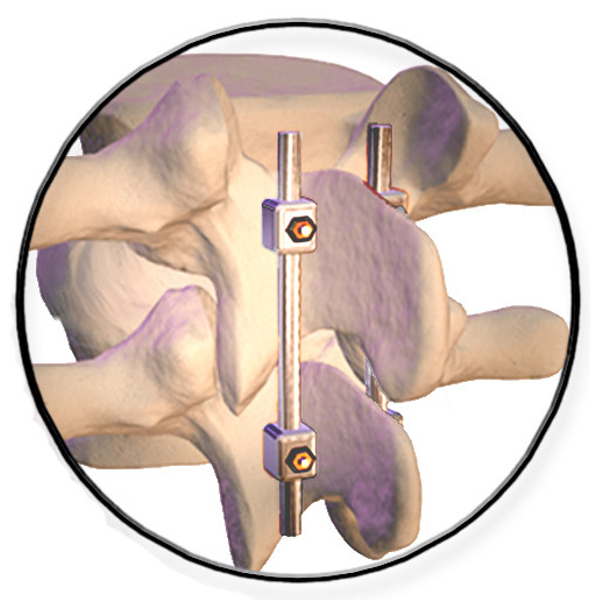What you do not know about the cruciate ligament
Many people wonder about the cruciate ligament, because they hear this term frequently in injuries to players during sports matches, but have you ever imagined that you might get a cruciate ligament as well? In the following article, we will talk about the causes that lead to infection and how to deal with it. Let’s read the following.
Cruciate ligament
The cruciate ligament is one of the very strong tissue ligaments that connect each of the femurs to the shin bone known as (the tibia), and injuries to the anterior cruciate ligament are often more common among people who play sports that require a sudden stop or change of direction and jumping or landing, and examples of sports in which this occurs are football, basketball and downhill skiing.
When an individual suffers an injury to the anterior cruciate ligament, he notices a sound similar to popping from the knee, and after a very short period it begins to swell and the injured person is not able to bear his weight on it due to the severity of the pain. Exposure to an injury to the cruciate ligament is very severe, so the treatment protocol includes complete rest and some rehabilitation exercises until the individual can regain his health again.
Cruciate ligament symptoms
When an individual suffers a cruciate ligament injury, the following symptoms begin to appear on them:
- Feeling the pain: The severity of the pain that may affect an individual varies according to the severity of the injury, and the individual becomes unable to press on the injured foot due to the severity of the pain. In most cases, the doctor may advise taking some painkillers while ensuring complete rest until full recovery.
- Swelling in the affected area: A tumor begins to appear around the affected area within 24 hours of exposure.
- Inability to bend the knee: When the knee becomes stiff, it becomes difficult to move or bend it as usual, and the individual should not try to move it in the first place so that the situation does not get worse.
In addition to the presence of many causes that may lead to the injury of the cruciate ligament, this may occur as a result of making some sudden movements or exposing the knee to a twist while running and jumping, in addition, there are many exercises and activities that individuals do that cause them to injure the cruciate ligament, for example:
- Suddenly slowing down or changing directions quickly.
- Jump and take a hard landing.
- Stop running suddenly.
- A collision or a direct blow to the knee.
What is the cruciate ligament?
The cruciate ligament, or what is known as the cross ligament, is one of the stabilizers of the knee bone during movement, and when looking at the x-rays that describe the human body, we find that there is an anterior cruciate ligament and a posterior cruciate ligament that intersect in the shape of the letter X, and they meet at one point. The cruciate ligament connects the femur bones with the shin bone because it prevents it from sliding to the front or behind the femur.
The difference between cutting and tearing the cruciate ligament
The anterior cruciate ligament is the one that works to stabilize the knee well, and in some cases, a partial tear may occur, and in other times it may be complete, and this results in severe pain and swelling in the knee area. Most likely, this injury is common among sports people, and this injury should not be ignored at all, because this may cause many very serious complications inside the knee.
While the cruciate ligament is cut by people who play sports such as football, basketball, and skiing, and this is because these sports require some movements such as jumping and moving quickly, many people suffer cruciate ligament cuts, but the percentage of female athletes is more than men.
location of the cruciate ligament
The location of the anterior cruciate ligament is exactly in the middle of the knee, as it is one of four important ligaments that connect both the shin and femur bones, in addition to maintaining the stability of the joint during movement, and the other four ligaments are the anterior cruciate ligament and the cruciate ligament. The posterior, medial collateral ligament (internal), and lateral collateral ligament (external), and the most common among individuals are injuries to the anterior cruciate ligament.
Cut the cruciate ligament
Ligaments are strong bands that connect bones and have a major role in stabilizing the joint during movement, and the chance of injury to people by cutting the cruciate ligament increases in the following cases:
- Women are more likely than men to suffer a cruciate ligament tear, due to differences in anatomy, muscle strength, and hormonal influences.
- Doing certain sports such as football, basketball, gymnastics, and downhill skiing.
- Poor ability to adapt.
- Adhering to wrong postures during the movement, such as moving the knees inwards during the squatting position.
- Wearing shoes that are not suitable for the size of the foot.
- Using sports equipment without proper maintenance.
- Play in areas with artificial turf.
Symptoms of cruciate ligament rupture
Many people wonder how do you know if you have a cruciate ligament injury. The answer to this question lies in the presence of some symptoms from which this can be inferred as soon as they appear on the individual, and here are some of them:
- The presence of a crackling sound in the knee joint is caused by a cut in the cruciate ligament, and the joint is not stable and the individual loses his balance immediately.
- Feeling severe pain in the knee area.
- Inability to move, sit, bend the knee, or even stand.
- The occurrence of blood pools inside the knee, causing swelling in the affected foot within 24 hours of the injury.
- When insisting on continuing to walk, the individual is unable to bear the pain.
- Inability to control the movement of the knee joint.
But if the individual had been subjected to a collision and the cutting occurred some time ago, then the following symptoms begin to appear:
- Loss of control of the knee or the ability to bend it freely, and there is discomfort in the movement of the injured person.
- Swelling may appear from time to time.
- Weakness in the front thigh muscles.
- If this injury is neglected, the knee may become rough after a while.
What is the difference between tearing and cutting the cruciate ligament?
The rupture of the cruciate ligament may be complete or partial in most cases, and it causes severe pain and swelling for the individual, and its treatment should not be neglected to avoid any serious complications with time, as for the rupture of the cruciate ligament, it affects people who do certain sports that require jumping and sudden stops, and most likely it affects women more than men.
What happens when the cruciate ligament breaks?
The break may occur in any of the anterior or posterior cruciate ligaments, and each of them results in different damages, for example:
The anterior cruciate ligament cutting
- It results in an injury to the bony joint of the knee.
- In most cases, the individual may develop arthritis and require surgery to re-establish the ligaments.
The posterior cruciate ligament cutting
- It results in damage to other knee structures such as cartilage and ligaments.
- In the long term, the individual is unable to feel comfortable depending on the number of damaged formations.
- Arthritis in the affected foot.
What is the treatment of the cruciate ligament in the knee?
Cruciate ligament injuries are usually dealt with in two ways, which are surgical and non-surgical treatment, and the doctor determines the appropriate position for the injured person according to his condition and desires. Naturally, if the injured person is old, this does not require surgery, but it is enough to take him for a rest and try to adapt to the situation as much as possible.
Cruciate ligament treatment without surgery
There is a question that preoccupies many individuals, which is is there a treatment for cutting the cruciate ligament without surgery. Indeed, many treatment methods have been found that can be followed without the need for surgery, and here are some of them:
- Conservative treatment: This method is very effective if the injury that the individual may have been exposed to is mild, as the doctor advises him to rest completely and not put pressure on the injured foot in any way, while making some cold compresses, and being careful to avoid standing for long periods or bending the knee with the use of medical braces for it.
- Medications: In this case, doctors prescribe some pain relievers and anti-inflammatory drugs to alleviate the symptoms resulting from the cruciate ligament injury.
- Exercising: There are some exercises that may greatly help in recovering from a cruciate ligament injury, as they focus on strengthening the thigh and leg muscles and improving the patient’s ability to move.
- Physiotherapy: Physiotherapy sessions in which the injured person receives rehabilitation is one of the best treatment methods in which surgical treatment can be dispensed with, as it strengthens the affected leg muscles and relieves pressure on the knee joint and the injured cruciate ligament.
Can the cruciate ligament be cured?
Anyone who suffers a cruciate ligament injury can fully recover from it after continuing physical therapy sessions and following the doctor’s advice well for a period ranging from 6 to 12 months, and it may take more than that.
How many days does the cruciate ligament need to heal?
The cruciate ligament needs 6 to 12 months or more to fully heal.
What is the difference between cartilage and cruciate ligament?
Cartilage is defined as a type of connective tissue that contains collagen fibers and is placed along the stress line in long and parallel matrices, and the cartilage does not contain blood vessels, nerves, and lymphatic vessels in the extracellular matrix, and the basic substance of the cartilage consists of a special glycoprotein called (chondroitin), and the cartilage is responsible for the production of the cartilaginous matrix, which makes the fibers and tissue structure more strong and elastic.
As for the cruciate ligament, it is a type of connective tissue that connects the bones to each other and fixes them in place, the ligaments are located outside the capsule on the outer surface of it, it consists of about 70% water, 25% collagen, 5% crushed material, and elastin.
The difference between cruciate ligament and cartilage:
- The cruciate ligament holds the bones together while the function of the cartilage is to prevent friction between them as it acts like a cushion.
- The cruciate ligament is more flexible than cartilage.
- The pressure on the cruciate ligament is less than the cartilage.
- The cartilages are more rigid than the cruciate ligament.
- Ligaments are classified under connective tissue proper, while cartilage is classified under skeletal tissue.


